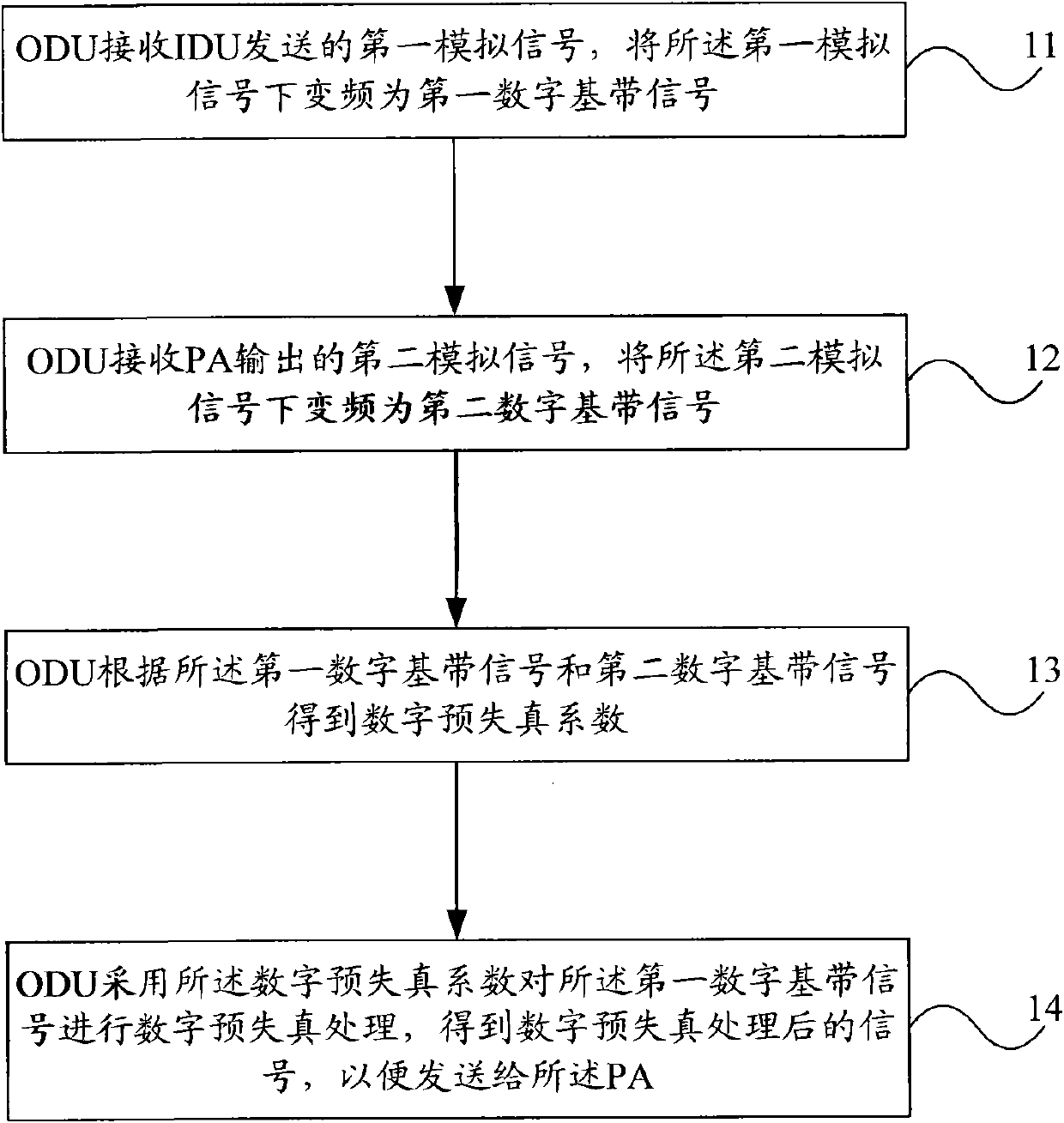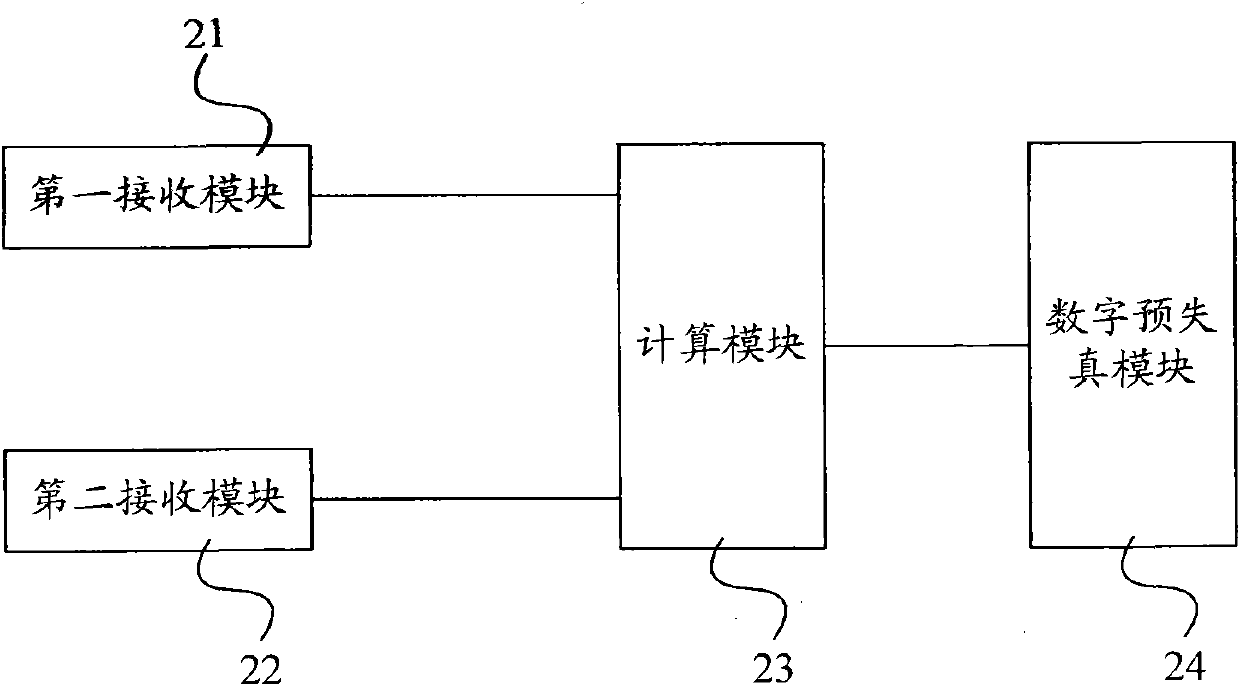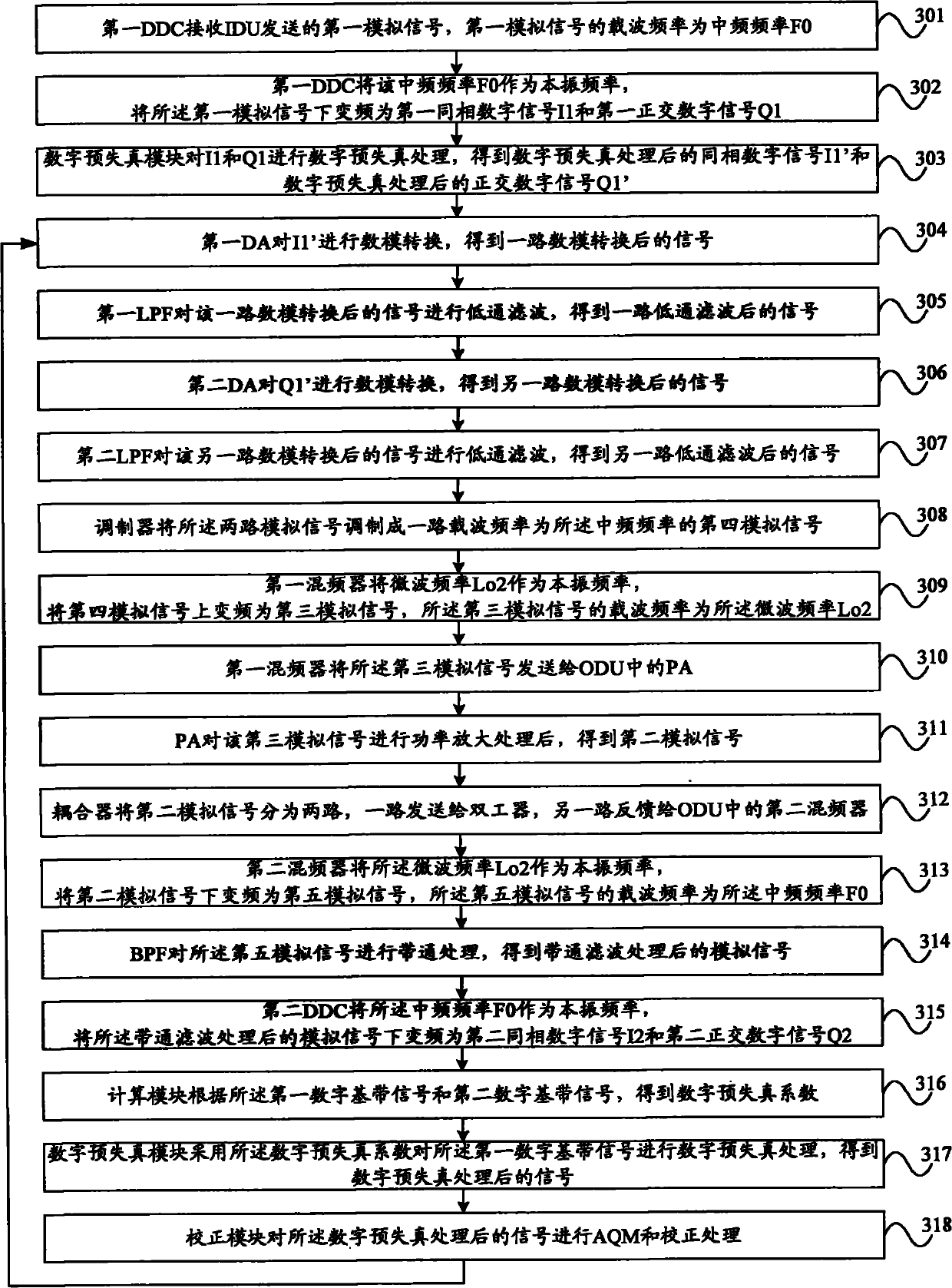Outdoor unit and method thereof for improving output performance
An outdoor unit and output performance technology, applied in the field of data processing, can solve problems such as poor output performance, and achieve the effect of improving output performance and achieving linearization
- Summary
- Abstract
- Description
- Claims
- Application Information
AI Technical Summary
Problems solved by technology
Method used
Image
Examples
Embodiment Construction
[0020] The technical solutions of the present invention will be described in further detail below with reference to the accompanying drawings and embodiments.
[0021] figure 1 A schematic flow chart of the method provided by the first embodiment of the present invention, including:
[0022] Step 11: The ODU receives the first analog signal sent by the IDU, and down-converts the first analog signal into a first digital baseband signal.
[0023] Wherein, the IDU may send the first analog signal to the ODU through a multiplexer (Multiplexer) between the IDU and the ODU. The multiplexer can transmit signals in a variety of frequency bands and is isolated from each other. Usually, the IDU and the ODU are connected by a multiplexer. Of course, it is understandable that other devices with the same function as the multiplexer can also be used. .
[0024] Step 12: The ODU receives the second analog signal output by the PA, and down-converts the second analog signal into a second di...
PUM
 Login to View More
Login to View More Abstract
Description
Claims
Application Information
 Login to View More
Login to View More - R&D
- Intellectual Property
- Life Sciences
- Materials
- Tech Scout
- Unparalleled Data Quality
- Higher Quality Content
- 60% Fewer Hallucinations
Browse by: Latest US Patents, China's latest patents, Technical Efficacy Thesaurus, Application Domain, Technology Topic, Popular Technical Reports.
© 2025 PatSnap. All rights reserved.Legal|Privacy policy|Modern Slavery Act Transparency Statement|Sitemap|About US| Contact US: help@patsnap.com



